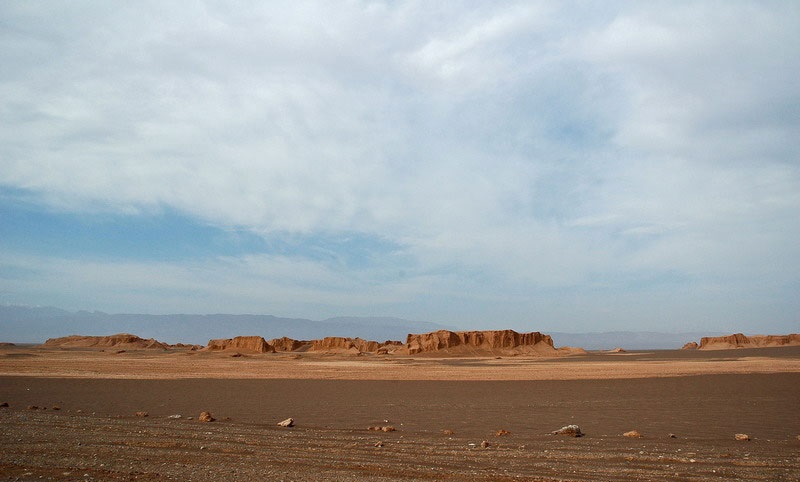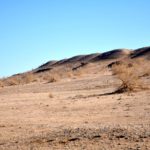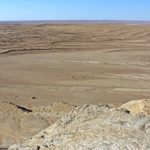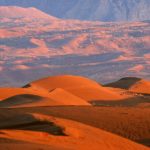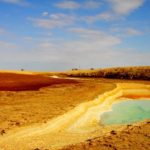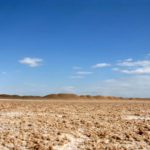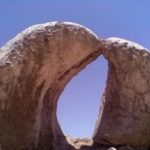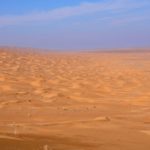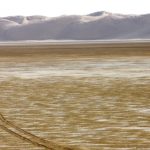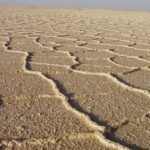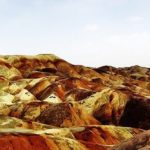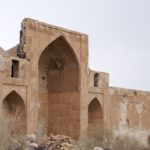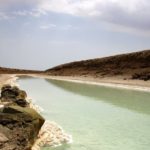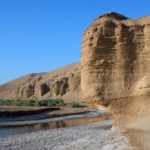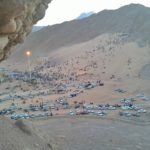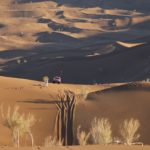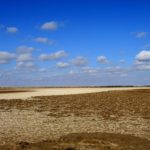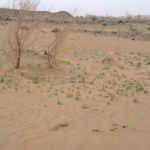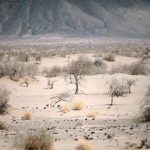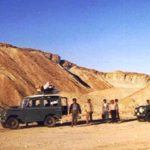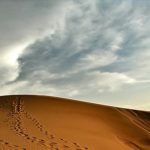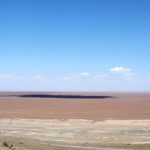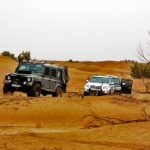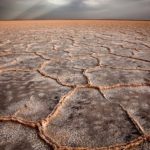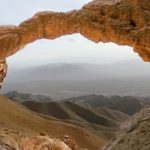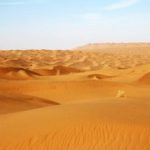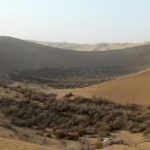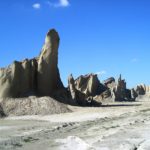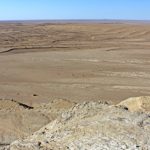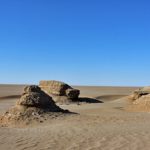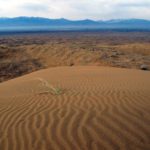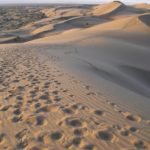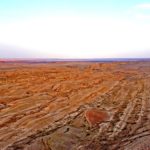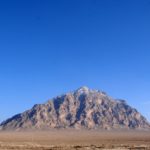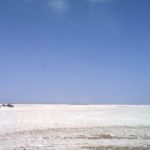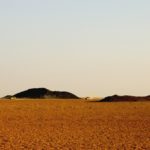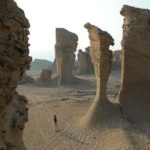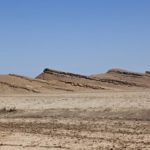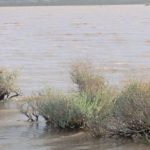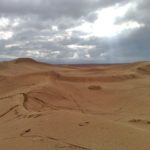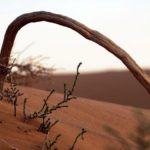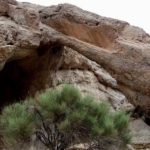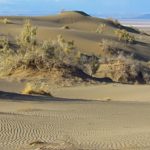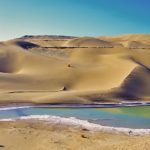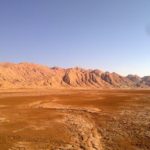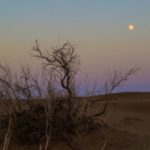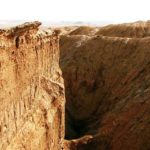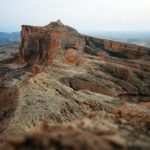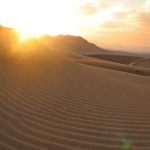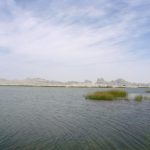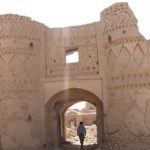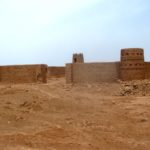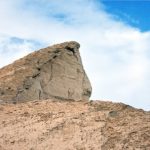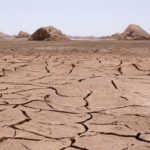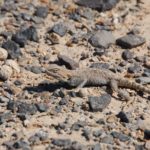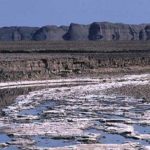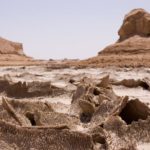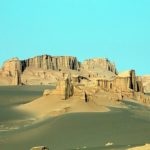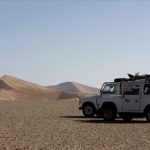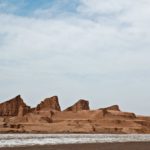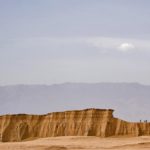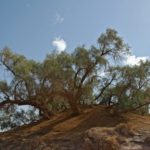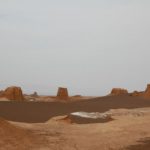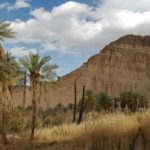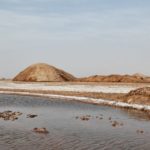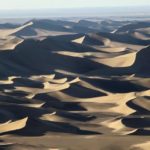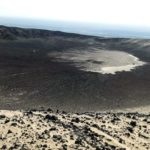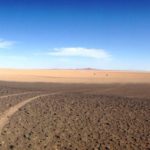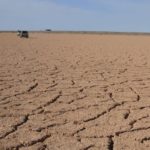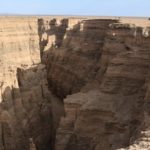Considering the extent of desert and desert areas of Iran which accounts for about 75% of the whole country, the study of the biological resources of these arid and arid regions is devoted to them. Iran has a long history and has relatively large and wide range of subject and context. Therefore, knowledge, current state of affairs, collection of research reports and findings of previous research are a great step forward. It will be positive in preventing re-work. One of the problems today in many countries of the world, even advanced countries, is the human society This is a problem that is widespread in Iran and other countries with similar climates. The average annual rainfall is estimated at about 880 mm. Two-thirds of our homeland receives less than 300 mm of rainfall per year. In many parts of the country, the actual amount of rainfall is much lower than that, and across the country, rainfall is less than 100 mm.
Read More ...
At the same time, the potential of evapotranspiration in dry and cool parts of our country has been met between 2000 and 3000 mm / year, which has caused many problems including soil salinity. The aforementioned conditions reveal a deep study of the vast desert areas of the country. The existence of wall climbers such as Alborz and Zagros in the north and west have made them climatically different. The penetration of the Caspian and Mediterranean rainy and humid masses into the center of the country has prevented the spread of arid climates (472562 square kilometers) and dry and cool climates (573884 square kilometers). It is distributed between warm and pervasive types. The two major and well-known areas of the region, namely the Kavir Plain and the Lut Plain, are among the driest regions of the Kerr. Although some areas have reported rainfall less than 20 mm / year. Although much research has been done on the climatic and geological conditions of these areas, Given the harsh biological conditions and the vast expanse of these areas, there is still insufficient information on all the components of these lands. But it is certain that large areas of texture have a similar climatic and even geomorphological structure. It indicates that about one million hectares of land are being desertified annually.
Although in many parts of Iran, with the decline of high quality forest and pasture ecosystems, some desert conditions are created with an acute and fragile nature, but desert and its processes in Iran are not new and rooted in geological structure. And climate. In fact, land in our country is an ecological reality that creates a favorable environment for desertification and land development, so that the slightest mismanagement of land use results in quality and quantity. In the wilderness, there are also key elements of life, including water, soil, plants, and animals, in other words, flowing through the veins of the wilderness. Both rangelands, soil and water resources have benefited from them well, so the effects of great civilizations can be seen in the desert areas of Iran. With the recent increase in population and the changes in the culture, pattern, and system of exploitation of these areas, the unconscious man has been undermining the role of geological and climatic factors in desertification by disturbing the balance of natural conditions. It has overwhelmed itself and taken the helm of its move towards becoming more desert. Unfortunately, in many places, including in our own country, we now have the additional challenge of desertification and ecosystems in addition to the problem of desertification. And hundreds of thousands of hectares of our wilderness are losing their natural life forever and forever. The result is drilling deep wells and installing strong pumps, sucking desert sap, and profitable, profitable livestock farming with increasing livestock, drying out desert skin, industrial plant smoke The lifeless body froze it and eventually the storm sprinkled salt on its wound and buried it under the sand.
Drought in our country is an ecological reality that creates a favorable environment for desertification and desertification so that the slightest mismanagement of land use reduces the quality and quantity of land. Drilling deep wells and installing strong pumps suck the sap of the desert, and profitable, profitable livestock grow with increasing livestock, dry desert skin and lifeless industrial plants. Taft it and finally the storm sprinkles salt on the wound and buries it under the sand.
Introducing the Lowland Plain lut
Lut Plain is one of the warmest and driest deserts in the world and is considered the warming hub of the world. A land in the south-east of Iran, where the vast expanses of lesser living things It has low population and sparsely populated settlements with low living and poor amenities and services. Due to the harsh biological conditions and the vast expanse of the area There is insufficient information on all parts of it. The Lut Plain is a part of the central plateau of Iran that is enclosed between the two Nehbandan faults in the east and the Neyband in the west. It is in fact the terminus of all superficial flows of the Lut Great Basin. Is, come into being. Most of the rocks are from the Third Period, and the flyovers cover most of the eastern part of the basin. The Lut Plain study area between latitude 08 and 56 to 13 and 60 east and latitude 38 and 28 It is located to the north of 10 and 32. From the north to the Delhuk Dam and the Kavir plain, from the east to the Birjand area to Hamir Hirmando … From the south to the Shoregesh area, east to Fajraj Bam, Narmashir Shirvarin and to the west. Shahdad, Ravar Bahabad is limited. Its maximum height is 1050 m, which is related to the northern highlands, and its minimum height is 56 m, which is to the west of the study area.
Desert Ecological Systems
Wilderness and desert ecological systems have special features that are inevitable for identifying and identifying indigenous plants and their limiting factors, using ecophytosociological surveys. The desert and desert ecological system, like any other ecological system, is composed of living and non-living components that maintain the equilibrium and balance between these components (the ecological system). These components can lead to the change of the whole system. On the other hand, identifying the desert ecological system and understanding the causes and how to change it and take action It requires any action, including prevention of desertification or desertification, to study the aforementioned ecological system carefully. In view of the characteristics of the desert ecological system, Desert, identification and determination of limiting factors and determination of limiting factors and species identification of each of the existing phytosociological units, is very important. Identification of desert and desert ecological system requires identification of exogenous exogenous environment and endogenous endogenous. Exogenous environment in relation to the climate dominated by the endogenous region and environment depends on the vegetation available. Cognitive is the application of methods of ecological study and plant sociology to help identify and determine the limiting factors,
The results of these surveys can be used in a variety of matters and in the socio-economic and development planning of the region and country.
Vegetation of the area
Vegetation type determination indicates that in the lower margins of the Lut Plain margins there are predominantly saline, sage and sage species, and at elevations overlooking these areas, such as Artemisia, which have low nutritional value for the first group. In the desert margin types, non-palatable, medium-palatable plants are found. Research on the propagation of these plants on the desert margin seems to be needed. Interestingly, except for grasslands At central elevations, forage harvested in many parts of the desert is less than 20 kg / ha.
Birds of the deserts and deserts of Iran
According to available reports, more than 490 bird nests live in 20 families in Iran, and more than 30% of its species live in desert, migratory and passage areas, depending on the specific characteristics of the areas. The desert has adapted. Some of the species mentioned are migratory, while others are predominantly butterfly and native to these areas, in addition to within the desert in the marginal areas, especially in shrublands with scattered trees. It was terrestrial and
Few of them are aquatic and have been found around temporary ponds caused by floods or salty and marshy marshes in the desert. The biological characteristics of desert birds and their adaptation are more or less similar to those found in plants in the desert. That is why studying around each of these specialties requires a long time of research and expertise.
Rodents in desert and desert areas of Iran
Influence of rodents on desert and desert regions requires their adaptation to the climatic factors of these regions and the most important of these factors are drought and high heat. The existence of this adaptation potential in some ancestral taxa of rodents caused during the third period. Geology penetrate the desert and desert areas. Obtain a tremendous variety of taxonomic, physiological and anatomical terms. There are no comprehensive and extensive studies in Iran, and limited and limited studies by foreign researchers. The study confirms the identification of species of Indian and African fauna in the desert areas of Iran.
Humans and arid regions
As the arid regions of the world are less favorable than other parts of the world, development and development in the arid regions are also more difficult, which in turn raises other peripheral problems. And it also has a lot of economic impact. Therefore, planners should consider the potential of many economically valuable minerals that can be extracted and exploited in many desert areas of Iran, including the Lot Plain. , These materials can offset part or even all of the cost of restoring desert areas
Creating jobs and a source of income for the inhabitants of dry areas, including the Lowland area, is of prime importance, followed by the provision of welfare, education and health services. Drugs are reduced to drug trafficking and addiction
And the opportunities available in such areas to propose and implement development and development plans. Here are examples of work being done in arid regions of the world that have transformed the region. Hopefully, Give an idea to development planners:
Fossil Water Extraction: Work has been done in Libya and Saudi Arabia. In Saudi Arabia, wheat is grown using these water resources and the use of capital and technology.
In India, by digging a 1,400-kilometer-long irrigation canal and transferring water to the Tahar desert in northwest India, Rajasthan has produced about 30,000 farm families in the desert and created many agricultural and industrial complexes. Nowadays India with its huge population in the cereal exporting jirga is considered. The Quds occupying regime, using artificial rain and removing relative salinity from the salt marsh and Arabian deserts in the south of this land, cultivates crops and uses high technology to produce high quality crops. It seems that in many other parts of the world, crops are better off than crops.
With the transfer of water from northern Afghanistan and Mazar-e-Sharif to the dry deserts of Qar-e Qom and Ghezel Qom by the Russians, today the dry regions of Turkmenistan have become a wheat and cotton production area.
The arid wilderness of the US and Colorado in the United States has gone under cultivation of pistachios and dates by studying and using technology.
With the creation of an earthen ridge at the bottom of the Qamrud River and a diversion canal along the Dam Alijan River in southern Varamin, for decades, large tracts of salt lake margin between Qom and Varamin have now become rich winter meadows.
The above, and hundreds of other examples, show that human technique and knowledge have enabled him to control and control many adverse phenomena. However, in many cases the costs can be offset by the use of resources and mines in the areas, and even with the profitability and employment associated with the revival of these areas.
Minerals of desert and desert areas
Many of the desert areas of Iran, including the Lut Plain, are saline. There are many economically valuable minerals in these areas that can be extracted and exploited. These materials can offset some or even all the costs of restoration. Areas of desertification. Minerals in the desert and desert areas are:
In this paper, the study of the status of bio-resources, the Lowland Plain in terms of erosion and its role in this field, has been briefly examined in the desert and desert regions of Iran. Halite, Silvite, Celestine (a combination of strontium oxide and sulfur), Sulfur.
In addition to the foregoing, numerous other minerals are found in desert areas, including the Lut Plains, which are not mentioned here and are out of the scope of this article.
Desertification and desertification
Desertification and desertification have occurred differently in the study area. The presence of a surface flow system, which is witnessed by large rivers and scattered marshes, indicates large volumes of water displacement. Originating from the east, north and south of the study area, the existing mosses, mainly located in the northern and southern elevations of the plain, are activated by seasonal rainfall and most of them continue due to the plain direction. Sloping slopes spreading across the surface This network of surface waters, with the materials they carry, themselves organize the phenomenon of desertification on a large scale. During the passage, the soil lays beneath the walls of its route and carries it downstream, and places some of its load where water carrying capacity is reduced. Due to the steep slope decrease The soil is dispersed and deposited by water in the plains. In the dry season, the sun’s moisture evaporates and the solids remain. The result of this process is the emergence of vast deserts and deserts and lands sensitive to desertification and desertification throughout history. The fine-grained materials that have spread across the deserts and deserts through the ultraviolet have been eroded by storms. Have been transported to and from remote areas, proportional to the kinetic energy of the wind and deposited with obstacles located in the direction of the wind’s movement and, over long processes, formed sandstones and sandstones. . Unless the ecosystems remain in the climax phase and are not exposed to degradation under the same desert conditions, desertification will not occur despite the desertification rule. For example, the areas of Si Gambar forest in Rigestan can be used. Siegbomber noted that with good vegetation and headwinds of hornbeam and gazelle, desertification in the restricted area has not yet penetrated.

